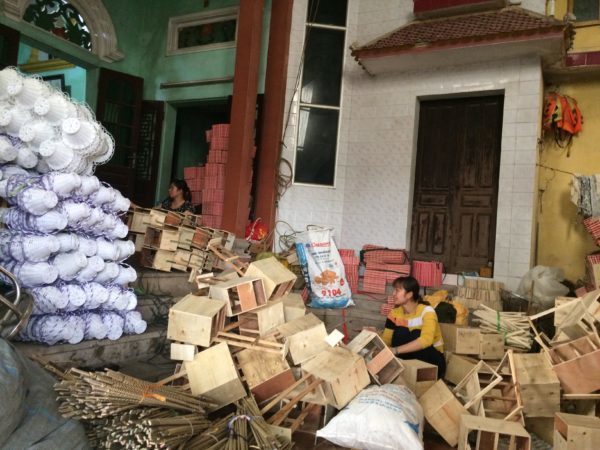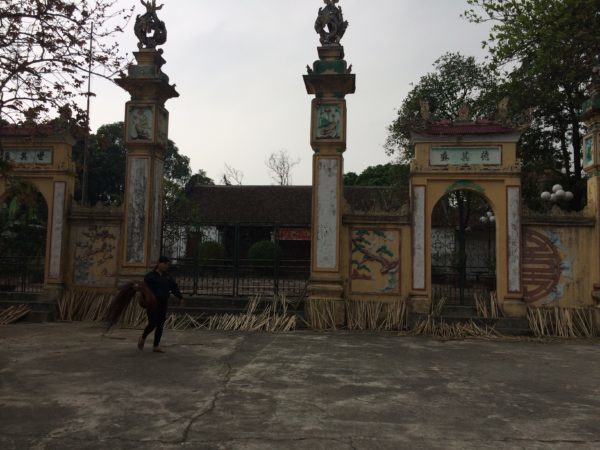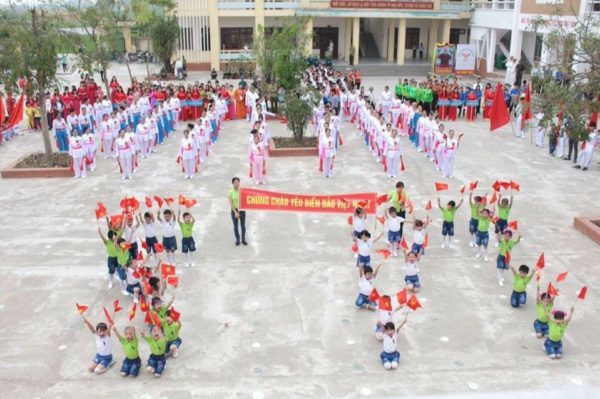Coming to Phu Tuc, from the village road to the alley, it is easy to see a lot of rattan and wicker products, dried grass, from raw materials to sophisticated products. In the village, at any house, guests also meet the images of people who are sitting and grooming, a grass, Giang, both old, young, boys and girls. According to Nguyen Thi Sau, 87 years old, Luu Thuong village, the oldest person still working in Phu Tuc is nearly 100 years old, and the youngest is a child who is 6 or 7 years old. Mrs Sau herself also has 80 years of work experience.

A production facility in Phu Tuc

Luu Thuong Communal house, the place of worshiping an international career
From these small, seemingly simple products, Phu Tuc has a good life, people always have jobs and income. Village roads and alleys are spacious and clean, high-rise houses are built up closely, many houses have cars, villas, and the commune has many factories and businesses prospering …. According to local leaders, Phu Tuc currently has more than 30 enterprises, 10 production complexes, hundreds of small-scale households, attracting tens of thousands of workers with regular jobs. Income from handicraft industry in the locality is very high, in 2018 reached 237.6 billion, up 14% compared to 2017.
Regarding the economic career of Phu Tuc, the people told that, in the 17th century, this place was sparsely populated, wild land, full of weeds, including weedy grass. There is a woman with Family name Nguyen, named Thao Lam, who came to settle, discovered that grass can be woven into utensils to catch fish and crab. She has done and taught the people, so far through many lifetimes, the traditional craftsmanship has been preserved and developed by the Phu Tuc people. Thanks to that woman, the people respected her as a profession and worshiped her at Luu Thuong communal house, on the 16th of October the lunar calendar year. Luu Thuong Communal House has been recognized as a cultural and historical relic.
To get sophisticated products, beautiful, attract buyers, the raw material stage plays an important role. Now, Phu Tuc has no more grasses, so they have to import materials in places, mainly from the northern mountainous provinces like Hoa Binh, Lao Cai, Yen Bai, Bac Giang… The materials when imported will be distributed into types then dry at least 3 sunshine to achieve the most viscous and eye-catching color, then be prepared, sort big and small fibers to fit the model. Through the hands of workers, the materials are shaped, styled, the product will be cleaned and then dipped through glue oil to give the highest durability, sun drying more 2 or drying to help the product color up. durable, beautiful, then sold. Craft products made of grass materials are made by Phu Tuc people the most. The grass has a characteristic aroma, very soft and tough, can be used for more than 20 years to break. Therefore, these products are simple and wild but still very modern, bearing the unique characteristics of Phu Tuc.

Not only developing craft villages, the spiritual life in Phu Tuc is also very interested.
Currently, Phu Tuc has made nearly 2,000 models of products, always gaining popularity in the domestic market and in 20 countries around the world. Phu Tuc has 8 villages, all 8 villages are recognized as traditional villages. Particularly in Luu Thuong village, the village has the most people working in the field and is the first place to make a good grass product.
Thanh Quy

